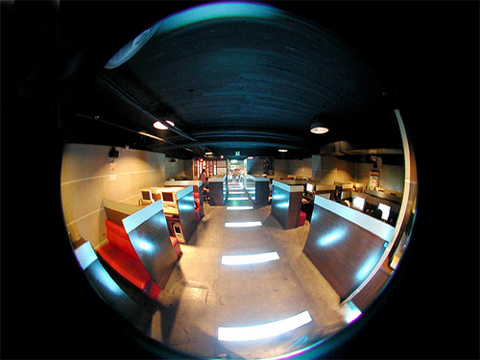
The idea that Islamic extremists use the internet for terrorist purposes is not exactly a revelation – terrorists have been coordinating attacks and spreading propaganda via email since the 1990s. Nevertheless, recent reports from the White House, as well as the Centre for Strategic and International Studies, suggest that the internet is being used more and more as a platform for extremist recruitment. With the rise of ‘Web 2.0’, or user-generated web content, extremists are now able to reach and interact with audiences of all ages, genders, backgrounds across geographic boundaries. Consequently, there has been a sharp increase in the number of ‘non-affiliated cells’ willing to carry out potentially fatal attacks.
| The internet is now the most important method of spreading jihad and Islam. | |
| -Imam Samudra, orchestrator of the 2003 Bali Bombings |
This audio-visual slideshow looks at the methods currently being used by Islamic extremists to radicalize individuals online and equip them for violence._
| For more information, please click here |
_
The internet can be a powerful weapon for spreading extremist messages. With the exponential growth of global internet connectivity, it is now more important than ever that NGOs, think tanks, and governments work together to generate effective strategies to counter the use of the internet for these purposes. As noted at the conference of the United Nations Counter-Terrorism Implementation Task Force (CTITF) on the Use of the Internet to Counter the Appeal of Extremist Violence in Riyadh earlier this year, for every harmful message on a particular internet medium, there should also be a counter-narrative on the same medium which provides a sound alternative to radicalized ideologies. Terrorist recruitment on the internet should not be a problem that is dealt with reactively– it needs to be defused before the real damage is felt.
For a much more detailed analysis on these topics, please read:
- Centre for Strategic and International Studies Report – A Threat Transformed: Al Qaeda and Associated Movements in 2011 (February 2011)
- New York City Police Department Intelligence Division Report: Radicalization in the West: A Homegrown Threat (2007)
- The United Nations CTITF Working Group on Countering the Use of the Internet for Terrorist Purposes – website
- The White House National Strategy Report: Empowering Local Partners to Prevent Violent Extremism in the United States (August 2011)
- United States Senate Committee on Homeland Security and Governmental Affairs Report: Violent Islamist Extremism, the Internet, and the Homegrown Terrorist Threat (May 2008)
- G Ramsay: Relocating the Virtual War, the Defense Against Terrorism Review (vol.2, no.1, 2009)

